Share this article
Learn from the brightest minds how to predictably and efficiently grow revenue.
Related Content
5 Ways to Use the Ebsta Integration With HubSpot to Improve Sales Performance
How to improve adoption of HubSpot with Ebsta
B2B Sales Benchmarks: 2023 H1 Update
The latest update from the 2023 B2B Sales Benchmarks analysis of over $37bn in pipeline.
How to improve AE quota attainment (according to data)
23% of reps are contributing 83% of revenue. Here's how to solve it (with data)
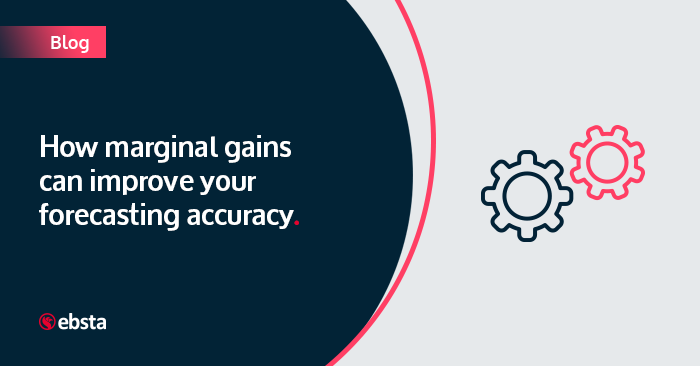
How marginal gains can improve your forecasting accuracy
Predictable revenue is a well-trodden subject.
But how do you actually achieve it?
Predictable revenue takes the guesswork out of growing your business.
It is built upon strategic processes which create consistency so you can ‘predict’ how much revenue your business will generate month on month, year on year.
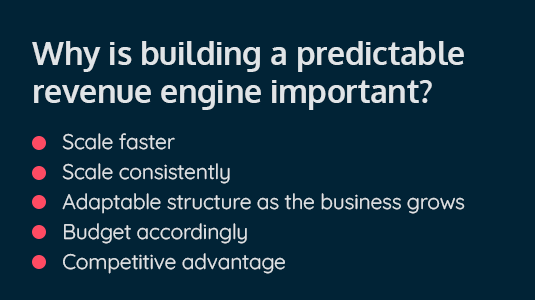
How do you build a predictable revenue engine?
The goal is to achieve marginal gains.
Marginal gains are small improvements that compound over time.
It is making small optimizations to unearth many improvements to your processes.
Over time, these improvements compound, generating bigger and better results as the business scales.
Here is an example:
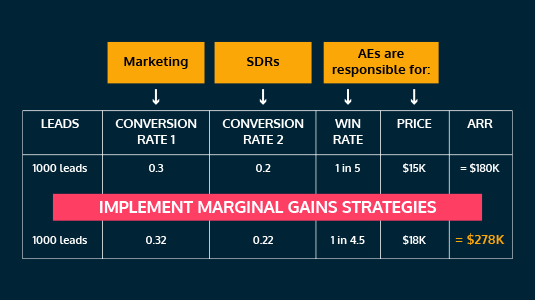
Where do you start?
Marginal gains are all about creating repeatable processes to find the 0.1% improvements which you can then roll out to wider teams and processes.
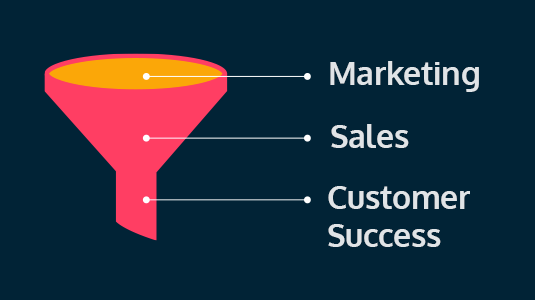
Marketers have paved the way for how to build processes to achieve marginal gains – something sales teams are now adapting and adopting.
Marketing teams heavily rely on data and analytics to find these small improvements to continue to build pipeline every single quarter.
For example, marketers might measure the open rates on the same email with a different subject line.
This allows them to pinpoint what is working well and what is not.
Marketing leaders can then continue to distribute the better-performing email to benefit from these marginal gains.
The ‘marginal gains’ approach is now being introduced and rolled out to sales teams.
Why now?
The pandemic created a huge shift in buyer behavior.
For the first time, sales teams were introduced to a digital-first model.
This introduced huge amounts of data which could be powerful when leveraged to create actionable insights.
This data enables sales leaders to do much the same as marketing leaders have for the last decade – discover marginal gains within a consistent, repeatable sales process.
Where to find marginal gains
Sales teams need to be doing two things.
- They should be measuring the right metrics to get an accurate picture of their pipeline and performance.
- Measuring the right metrics then allows you to find existing strategies that have been working well as well as try out new tactics and approaches to find those marginal gains.
This is where an operating cadence comes in.
What is an operating cadence?
A cadence is a rhythmic sequence.
It outlines when, where and how leaders and their teams will meet and what they will discuss.
Cadences increase visibility, build consistency and encourage collaboration.
Operating cadences are used company-wide as a way to ensure everyone across the board is on the same page.
Sales teams specifically use forecasting cadences.
What is a forecast cadence?
Forecasting cadence can help to improve the accuracy of your sales forecast by providing complete visibility into the health of your sales pipeline, setting a clear forecasting process, and increasing collaboration and accountability for all team members.
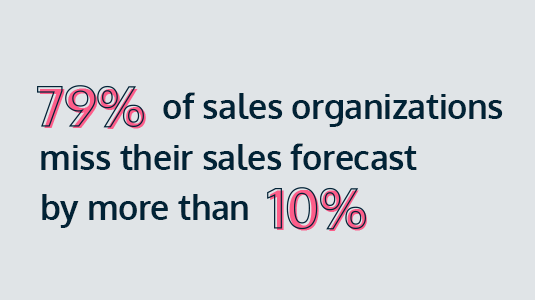
Forecasting and marginal gains
A forecasting cadence establishes a repeatable process, making your pipeline reviews and forecast calls predictable – meaning they can be analyzed and then optimized.
As previously mentioned, implementing a forecasting cadence means that all your sales reps will follow the same pipeline review process.
This makes it incredibly easy to spot the differences between a high-performing sales rep and a low-performing one.
What are high-performing reps doing that helps them to close deals?
Perhaps the high-performing rep spends longer discussing deals at risk. Perhaps they are identifying economic buyers to push their deals forward.
These learnings can then be tested with low-performing reps to see if you can find an improvement.
Let’s dive into some specifics of how you can improve your 1:1 pipeline reviews, forecasting calls, and sales activity (calls, emails, and meetings).
1:1 pipeline reviews
The objective of these reviews is to inspect each opportunity and review individual rep commits.
The secret to a successful 1:1 pipeline review is nailing a consistent structure.
Traditionally, pipeline reviews varied from week to week. Typically, half the meeting is spent reviewing pipeline to help managers understand the state of play.
However, there is a better way to conduct these reviews.
Implementing an operational structure means you are covering the same points every single week. This is dependent on managers having visibility of their reps’ pipeline which they can review before the review.
One way to do this is by asking your sales reps the same questions every week. For example:
- Which deals are at risk? Why?
- Which deals are approaching their close date?
- What are the next steps required to close this deal?
How do you now maximize marginal gains?
This builds a consistent habit for both sales reps and managers. Both parties know exactly what to expect and therefore can be better prepared.
When all of your sales reps are using the same structure it makes it easier for operations teams to compare performance.
Operations teams can analyze the high performers to extract what is working well and vice versa with low performers.
The biggest benefit of this structure is that it allows you to be proactive rather than reactive.
It allows you to identify issues as they arise and resolve them.
Not only that, this structure can be easily updated to ensure you are extracting the most value from these 1:1s.
For example, you might not be getting value from asking about the close dates in your pipeline.
Instead, you can deep dive into the specifics of these same deals. You could consider how engaged your reps are with stakeholders.
We analyzed 6 billion dollars of sales pipeline to uncover that strong engagement with an opportunity delivered a win rate of 59%, compared to just 25% with only good engagement.
This data suggests that more engagement results in higher win rates.
So you could question how many stakeholders your reps are engaging with. This is just one example of how you could extract the most value from these meetings.
Forecast calls
The main objective of forecast calls is to review current quarter pipeline progression and the “commit” forecast.
What are we trying to achieve with forecast calls?
Visibility.
High visibility allows you to be able to predict your forecast more accurately and therefore make data-driven decisions.
Just like 1:1 pipeline reviews we are again trying to build consistency.
Here are some of the key questions you should be asking:
- How much have we closed so far?
- Is that on pace with our target?
- Is there a big difference between the commit and upside?
By gaining visibility of your pipeline, you can take action in real-time.
For example, if you are not on pace with your target – what can you do to ensure you hit your target.
It allows reps and their managers to see how a deal is truly performing.
They can dissect how it is progressing in terms of stage, the number of relationships, the level of engagement, next step, and much more.
It allows managers to cut to the heart of the issue in a pipeline review.
Marginal gains stem from that pipeline review – their impact can be felt in forecasting accuracy.
How to maximize marginal gains
Maximizing marginal gains with forecast calls requires two things:
- Basing commits on the cold, hard data – rather than gut feelings.
- Leveraging predictive forecasting (if available), to identify how likely a deal is to close based on historical benchmarks.
As such, you can create a cadence of pipeline reviews before making such a commit.
This is why we created the forecast toggle – so reps could set it to Pipeline/Commit/Upside whilst they are in the thick of their pipeline review.
Then when they come to commit, it is a simple case of running a last series of checks and then hitting submit.
Managers can now monitor quotas, judge the accuracy of their sales teams’ forecasts, and report on the execution.
Sales calls, e-mails, and meetings
There are small tweaks you can easily make to improve your success rates with sales calls, emails, and meetings.
These changes could be small as changing your opening line in calls or emails.
How to maximize marginal gains
The ability to record, track and monitor sales calls, emails, and meetings has introduced a huge amount of data that can be analyzed to find what is working well and what is not.
Leveraging this data allows you to find best practices for your business and therefore maximize marginal gains. Here are some examples of best practices backed by data:
Sales calls – although you want to relay all the information about your business and what you have to offer in a discovery call, win rates actually spike when the prospect spends more time speaking during the call.
Sales emails – never negotiate pricing over email. Whilst, win rates spike when pricing is shared via email, they dramatically decrease as soon as you start negotiating over email.
Sales meetings – start building rapport. This is not the same as small talk. This means speaking about a common interest because at the end of the day small talk can be easily forgotten.
Customer Success
The best way to maximize marginal gains is to look at the entirety of the sales cycle. This includes customer success too.
The same concept of operational cadences can be extended to cover onboarding, retention, and brand advocate processes.
How to maximize marginal gains
Diving into your customer success data can reveal aspects of your product or software that are not being used or features that are not being utilized to their full potential by customers.
One of the reasons for this could be that customers are not clear about the functionality of these features.
Marginal gains could be found from introducing a training outreach program to educate customers on how to use these features and how it would benefit them.
This would result in increased usage of your product as well as customers extracting more value leading to increased customer satisfaction.
This approach results in higher retention rates and the opportunity for expansion as your customer success teams are providing additional value to customers.
Conclusion
Marginal gains compound over time resulting in big wins.
Applying this approach through the entirety of your sales cycles improves performance, drives more wins, and generates more revenue.
Sounds like a win-win situation to me. Implement this approach today with our forecast cadence.


